Unearthing a Green Tradition in Queensland Schools: Arbor Day and school garden history
By Dr Mimi Tsai, 2022 John Oxley Library Fellow and Dr Elizabeth Heck. | 20 June 2025
Guest blog by Dr Mimi Tsai, 2022 John Oxley Library Fellow and Dr Elizabeth Heck.
Gardens have long been a cornerstone of schools in Queensland and Australia, offering students a hands-on opportunity to connect with nature, sustainability, and community. From humble beginnings, these green spaces have blossomed into key tools for teaching and fostering curiosity.
Over the years, school gardens in Queensland have reflected broader societal changes, embracing the values of environmental stewardship and healthy living. Today, they stand as vibrant testaments to the enduring relationship between education and the natural world. Whether cultivating vegetables, flowers, or an appreciation for biodiversity, these gardens continue to play an important role to Queensland schools, students and the wider communities.
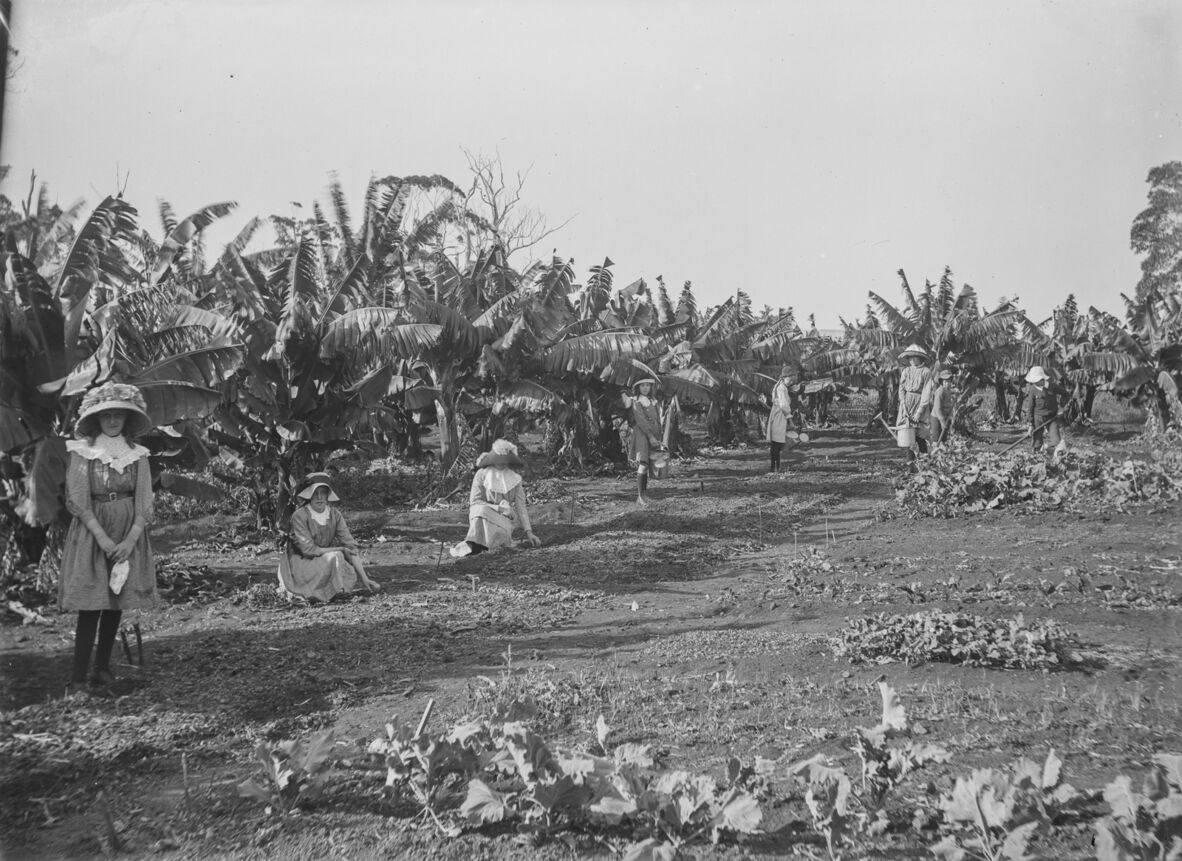
School children working in the State School's garden plot. 31721 Glass plate negatives and lantern slides of Queensland and India, John Oxley Library, State Library of Queensland. Image number: 31721-0002-0037.
As we explore the history of school gardens, it becomes clear that they share a strong connection with Arbor Day, which played a key role in promoting tree planting and eventually expanded to encourage gardening in schools. It started in the late 19th and early 20th centuries, the Queensland Government’s Department of Public Instruction (later renamed the Department of Education in 1957) promoted the beautification of state school grounds through initiatives like Arbor Day. Schools were encouraged to plant shade trees and flowering shrubs, with prizes awarded for the best-maintained gardens and playgrounds. The first Arbor Day was held on 1 August 1890, but due to seasonal challenges, the date was moved to 1 May in 1891. That first celebration saw the planting of 9,655 trees across Queensland. the Department of Public Instruction declared the first Friday in May as the official Arbor Day in 1930, with the rule taking effect from the 1932 school year.
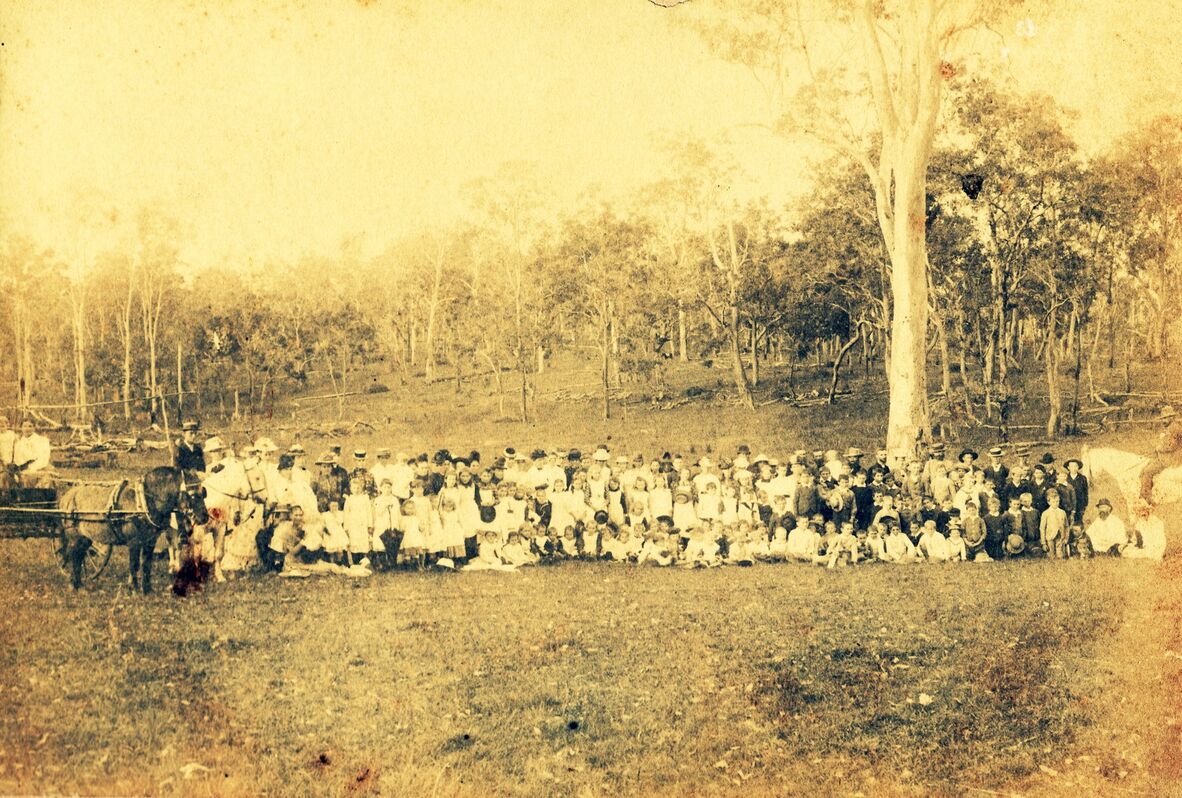
First Arbor Day held in the grounds of North Pine State School. Caboolture Moreton Bay Regional Council; 2008. Image number: pin1926_1
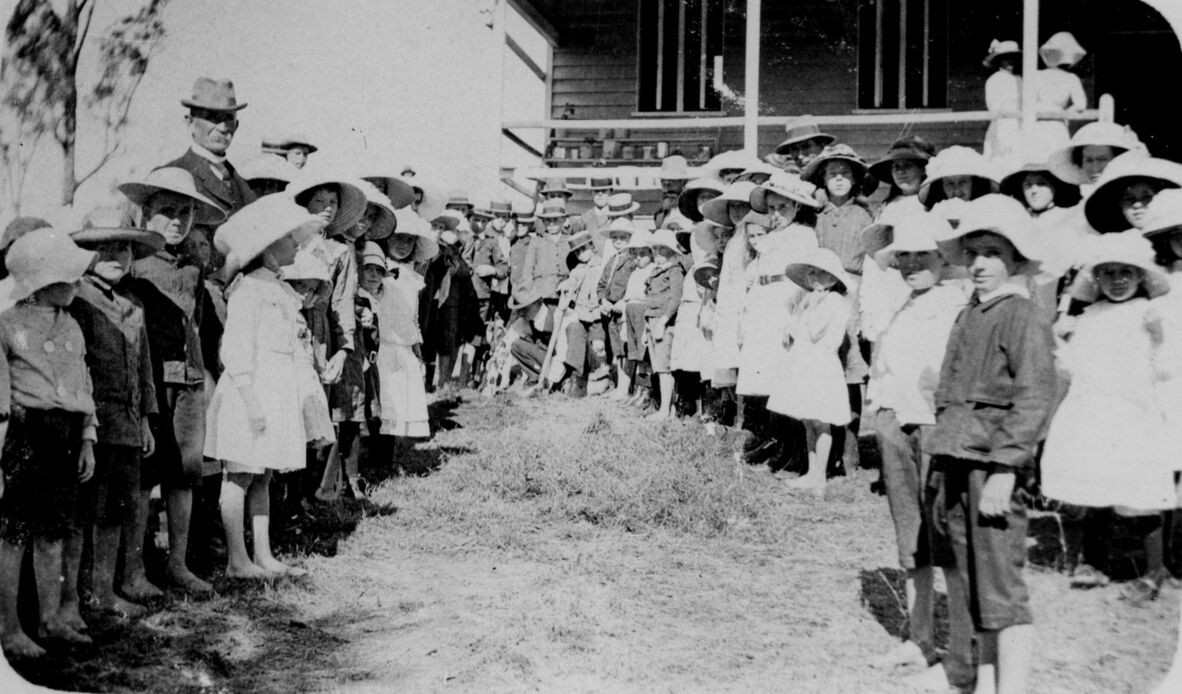
Children assembled for a tree-planting on Arbor Day at Blenheim, Queensland, ca. 1913. John Oxley Library, State Library of Queensland, neg 120622.
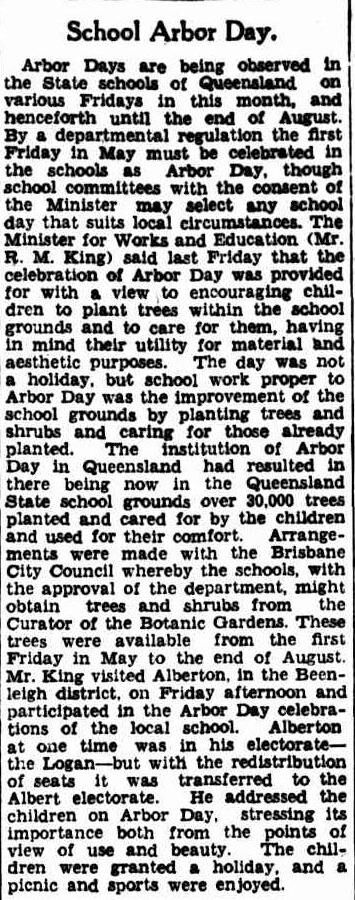
1930 'School Arbor Day.', The Brisbane Courier (Qld. : 1864 - 1933), 12 May, p. 12. Trove, National Library of Australia.
Using a Trove search, an article from The Brisbane Courier dated May 12, 1930, reported that Queensland schools marked Arbor Day by planting and maintaining over 30,000 trees. With support from the Brisbane City Council and Botanic Gardens, students enhanced school grounds. Mr. King joined Alberton’s festivities, which included a holiday, picnic, and sports.
By encouraging students to plant trees and care for their school grounds, Arbor Day gradually sparked broader gardening initiatives across Queensland schools, nurturing a culture of environmental responsibility that allowed school gardens to thrive as both educational and community spaces.
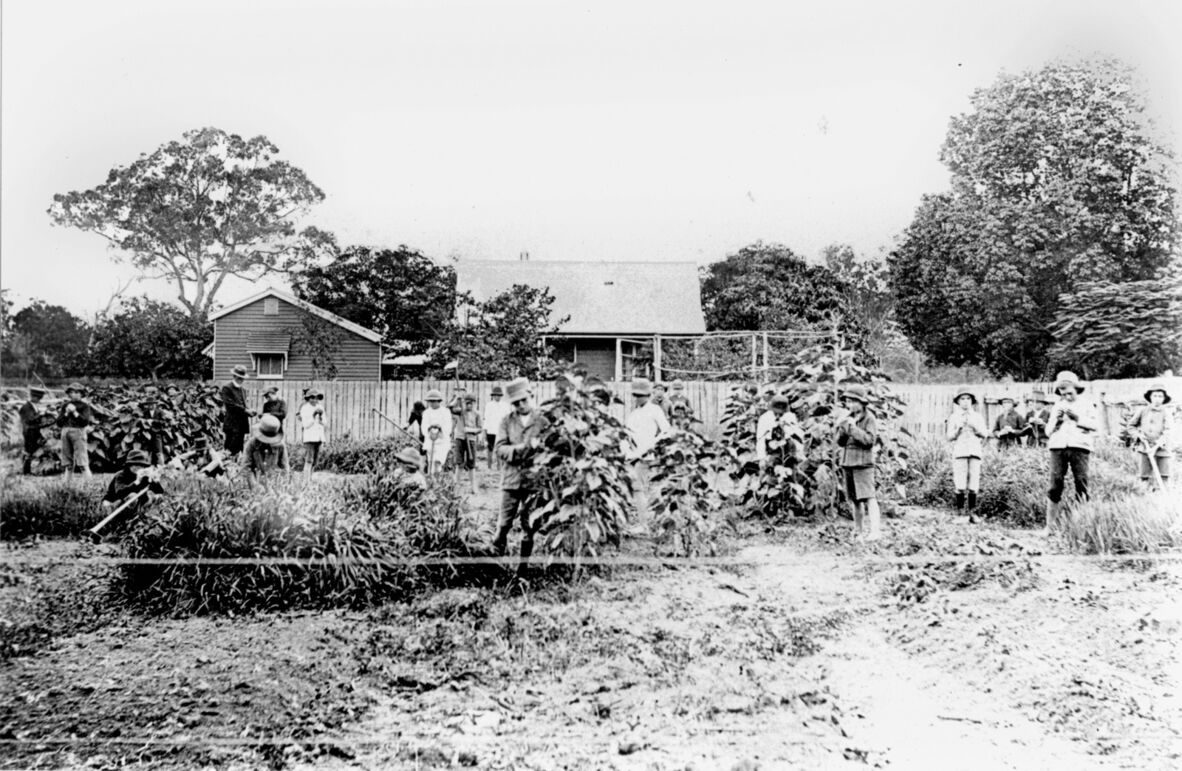
Tinana State School garden, Gympie Road, Maryborough, ca. 1905. Maryborough Fraser Coast Regional Council; 2006, Image number: qmar00030.
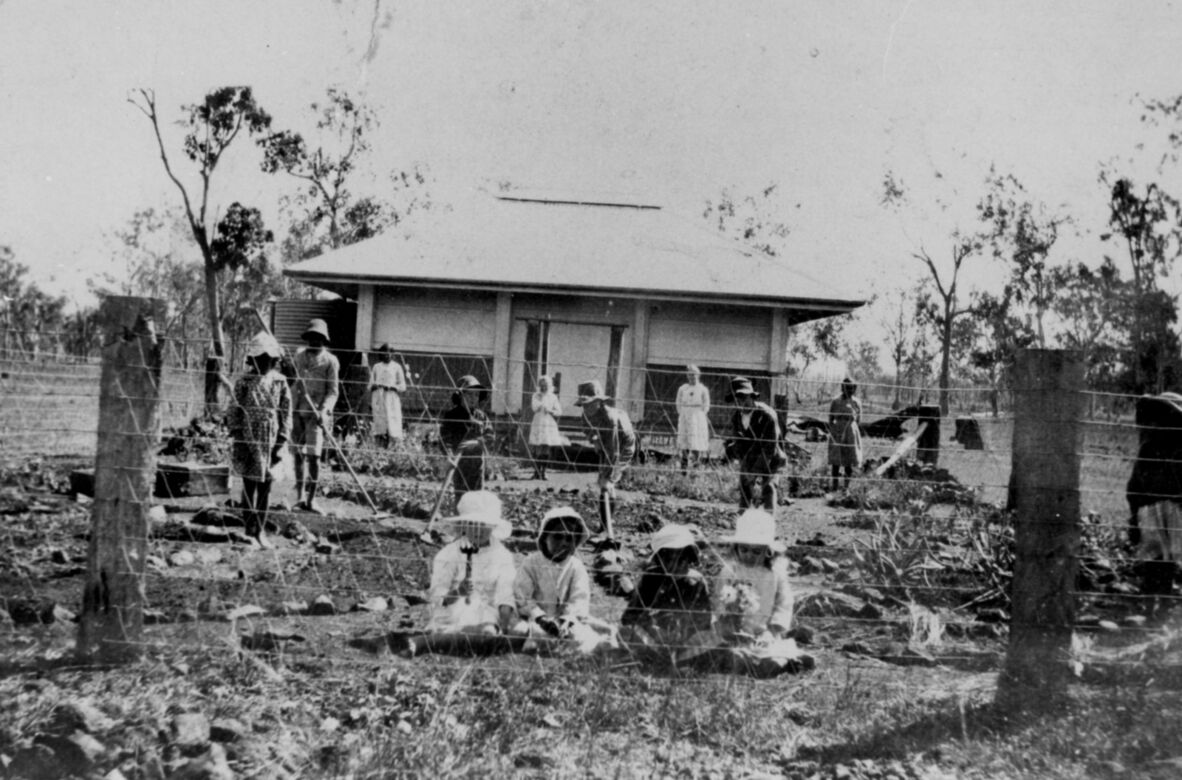
Schoolchildren from Ban Ban Springs State School, tending to the school garden, 1919. John Oxley Library, State Library of Queensland, neg 184178.
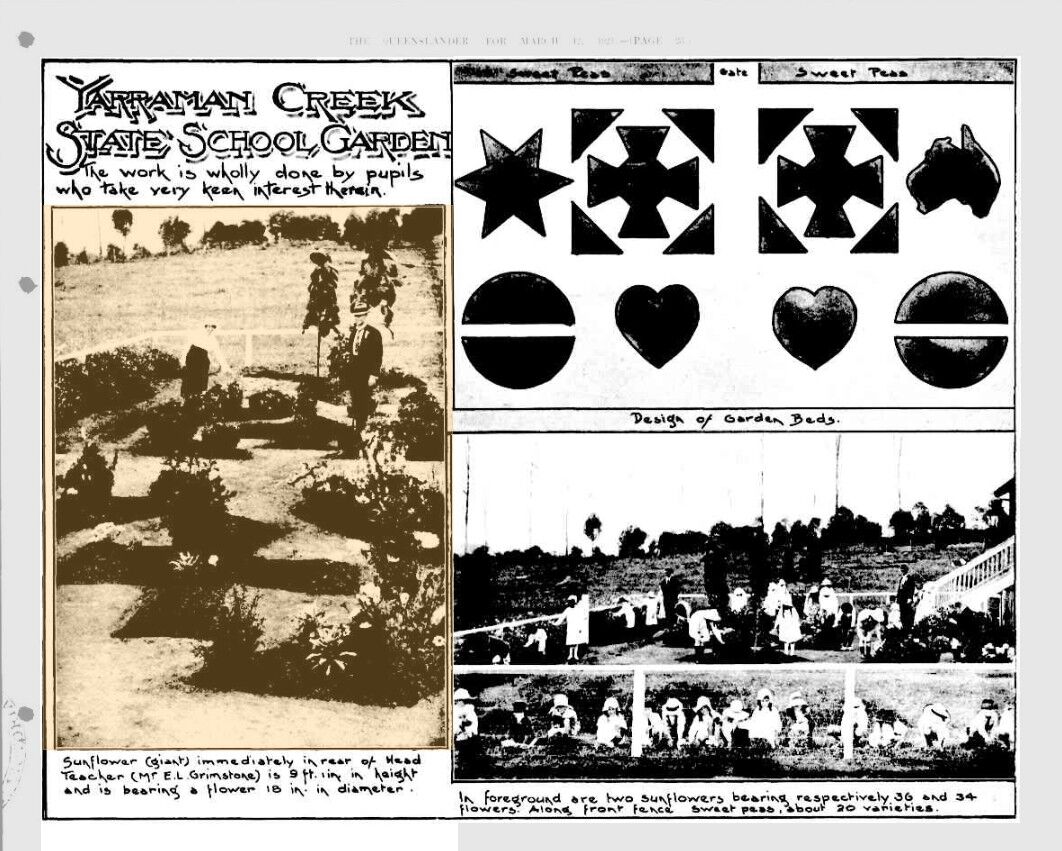
1921 'YARRAMAN CREEK STATE SCHOOL GARDEN', The Queenslander (Brisbane, Qld. : 1866 - 1939), 12 March, p. 23. Trove, National Library of Australia.
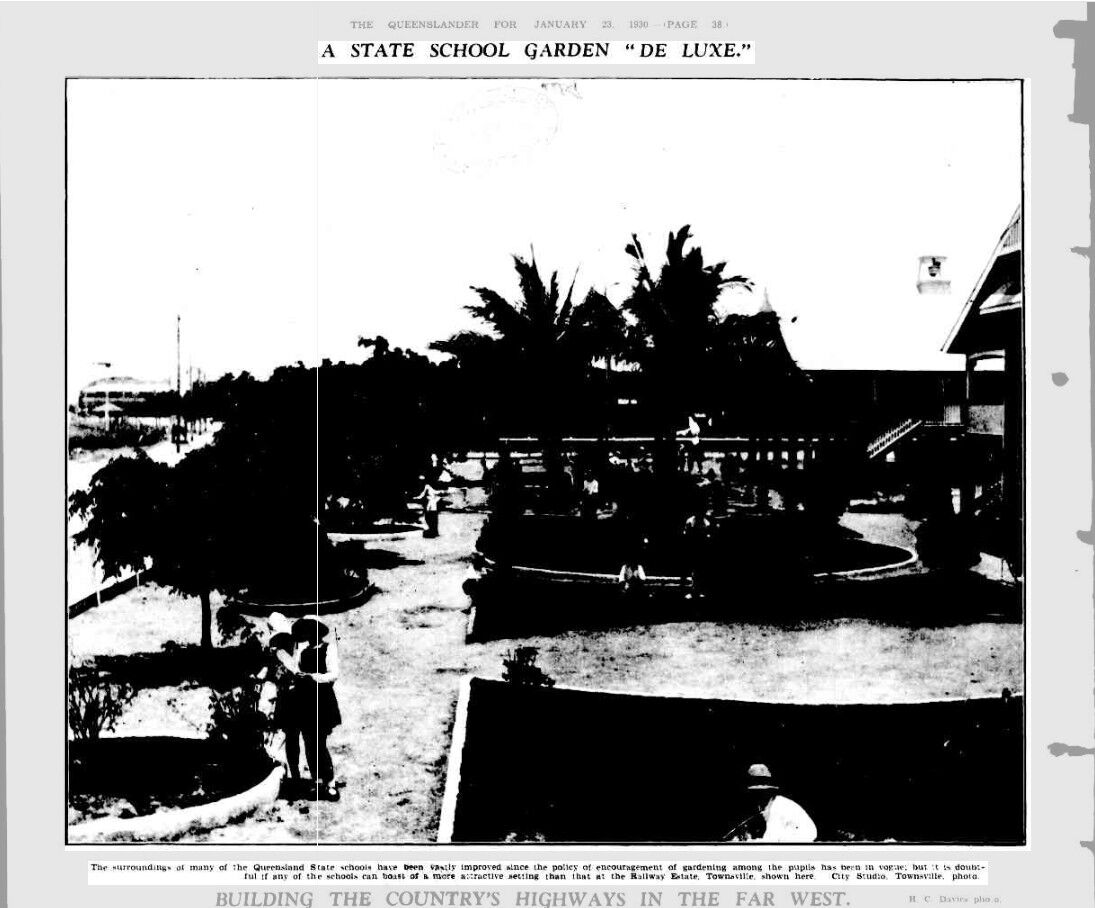
"A STATE SCHOOL GARDEN "DE LUXE."" The Queenslander Illustrated Weekly (Brisbane, Qld. : 1927 - 1939) 23 January 1930: 38. Trove, National Library of Australia.
The school garden movement in Australia was also shaped by the annual School Garden Competitions, which began in 1903 under the sponsorship of the Australian Natives Association (Robin, 2001). The year 1903 marked a significant moment in the development of school gardens in Australia, particularly in the southern states of Victoria and South Australia. In South Australia, James Greenlees, who earned the reputation as the ‘pioneer of school gardening’ in that state (Whitehead, 2018) promoted school gardening as a means of fostering student engagement, even providing children with bulbs, violets, and daisies to plant at home on Arbor Day. Meanwhile, in Victoria, a Circular of information, no 2: Gardening for Victorian State Schools (1903) was published outlining the role of school gardens (Pullman, 2024), reflecting a growing recognition of their educational value. Various scholars (Pullman, 2024; Robin 2001; Whitehead, 2018), have noted the importance of 1903 in shaping school garden initiatives, suggesting it was a pivotal year in integrating horticultural education into the curriculum. Furthermore, these emerging school gardens were seen as valuable tools to integrate environmental education into the curriculum, promoting ‘Progressive conservation’ ideals (Robin, 2001; Whitehead, 2018). Initially, the ‘School Garden Movement’ in Australia was noted as ‘Nature Studies’, before evolving into its own education style around 1914, with all six states incorporating school gardens into their curriculum and joining this worldwide movement (Pullman, 2024). This movement emphasised responsible stewardship of nature and the moral and character-building aspects of connecting with the natural world through hard work (Robin, 2001).
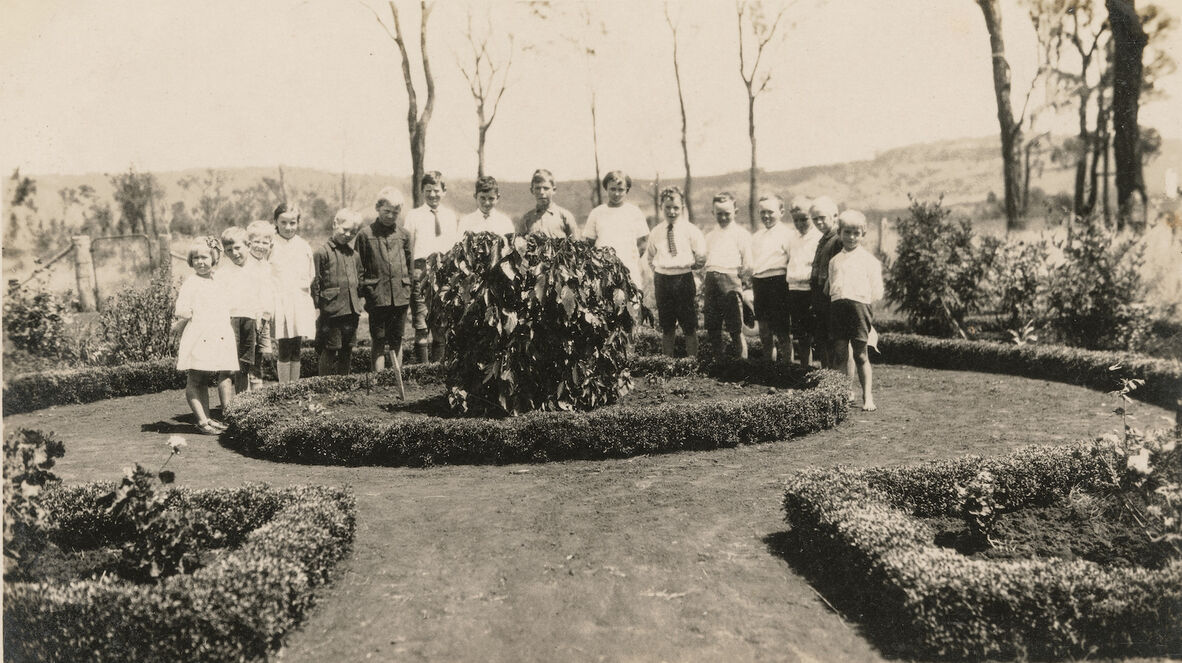
Students standing in the Norwood State School gardens, 1928. John Oxley Library, State Library of Queensland, Image number: 33187-0009-0004.

Students standing by the Norwood State School gardens, 1928. John Oxley Library, State Library of Queensland, Image number: 33187-0009-0001.
From then School gardens continued to play a vital role—not only by providing students with physical activity, but also by boosting food production at a time when materials and supplies were in short supply. School gardens can also be found in various regional Queensland towns including Munduberra, in the North Burnett Region.
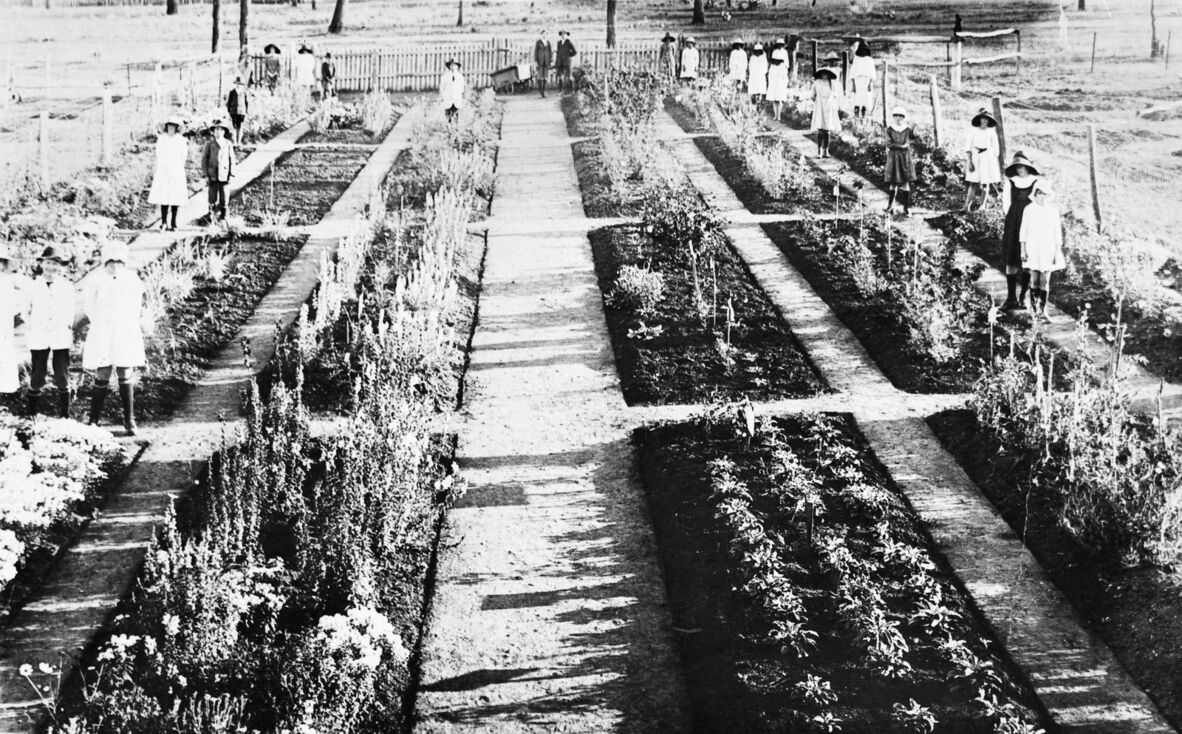
Mundubbera State School gardens, Queensland, 1920. 27878 Mundubbera Glass Plate Negatives, John Oxley Library, State Library of Queensland. Image number: 27878-0001-0010.
Dr Mimi Tsai and Dr Elizabeth Heck.
Read more blogs from Dr Mimi Tsai or learn more about her John Oxley Library research project, Vernacular Landscapes and Queensland Memories: Exploring Queensland’s resilience through narratives of therapeutic environments.
References
Pullman, S. (2024). The Australian school garden: Movement its golden age, 1890 to 1920. Australian Garden History, 36(2), 12-15.
Robin, L. (2001). School gardens and beyond: progressive conservation, moral imperatives and the local landscape. Studies in the History of Gardens & Designed Landscapes, 21(2), 87-92. https://doi.org/10.1080/14601176.2001.10435237
Whitehead, K. (2018). James Greenlees’ school garden and the suburban dream in colonial Australia. Studies in the History of Gardens & Designed Landscapes, 38(4), 342–352. https://doi.org/10.1080/14601176.2018.1505138
Comments
Your email address will not be published.
We welcome relevant, respectful comments.